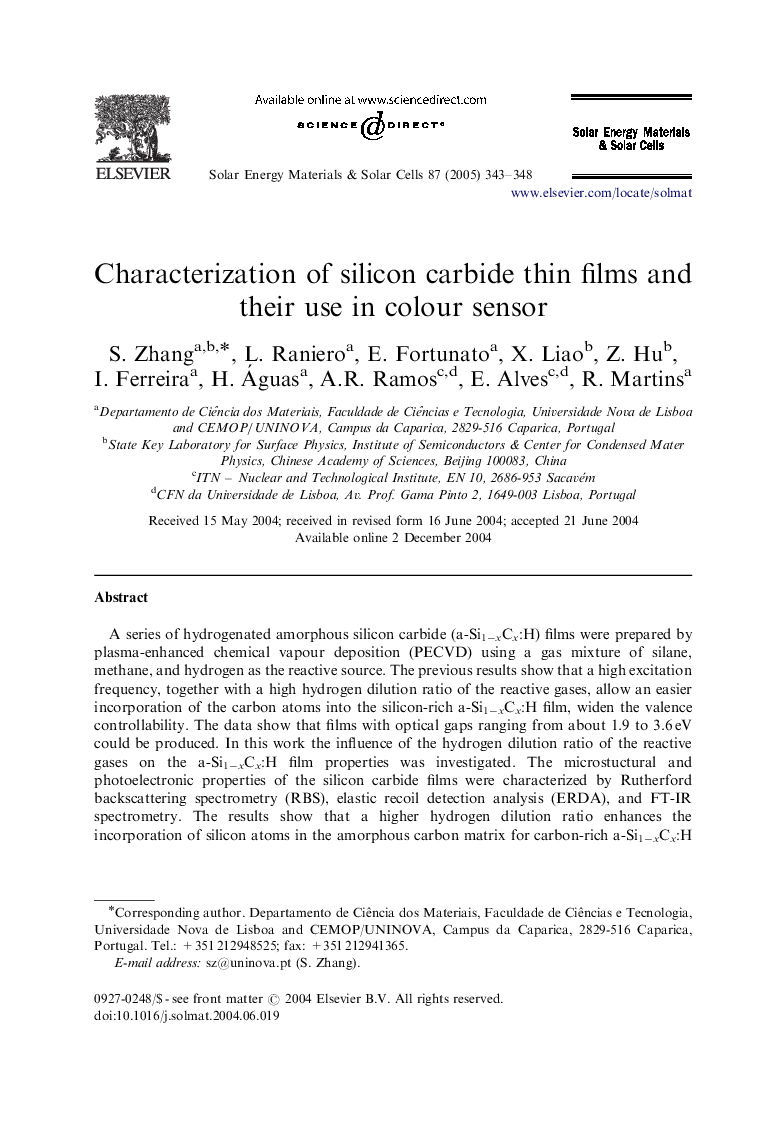| Article ID | Journal | Published Year | Pages | File Type |
|---|---|---|---|---|
| 9618679 | Solar Energy Materials and Solar Cells | 2005 | 6 Pages |
Abstract
A series of hydrogenated amorphous silicon carbide (a-Si1âxCx:H) films were prepared by plasma-enhanced chemical vapour deposition (PECVD) using a gas mixture of silane, methane, and hydrogen as the reactive source. The previous results show that a high excitation frequency, together with a high hydrogen dilution ratio of the reactive gases, allow an easier incorporation of the carbon atoms into the silicon-rich a-Si1âxCx:H film, widen the valence controllability. The data show that films with optical gaps ranging from about 1.9 to 3.6Â eV could be produced. In this work the influence of the hydrogen dilution ratio of the reactive gases on the a-Si1âxCx:H film properties was investigated. The microstuctural and photoelectronic properties of the silicon carbide films were characterized by Rutherford backscattering spectrometry (RBS), elastic recoil detection analysis (ERDA), and FT-IR spectrometry. The results show that a higher hydrogen dilution ratio enhances the incorporation of silicon atoms in the amorphous carbon matrix for carbon-rich a-Si1âxCx:H films. One pin structure was prepared by using the a-Si1âxCx:H film as the intrinsic layer. The light spectral response shows that this structure fits the requirement for the top junction of colour sensor.
Keywords
Related Topics
Physical Sciences and Engineering
Chemical Engineering
Catalysis
Authors
S. Zhang, L. Raniero, E. Fortunato, X. Liao, Z. Hu, I. Ferreira, H. Águas, A.R. Ramos, E. Alves, R. Martins,
